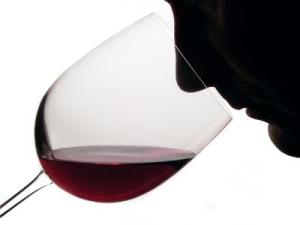2008 Domaine du Vieux Télégraphe Châteauneuf-du-Pape, Le Crau
Rhone Valley, France
Importer Kermit Lynch hits the nail on the head: “One cannot think of Châteauneuf-du-Pape, the most celebrated cru of the Southern Rhône, without thinking of Domaine du Vieux Télégraphe. The Brunier family is legendary in its own right, having been rooted to the enigmatic plateau known as “La Crau” for over one hundred years.” By law, Châteauneuf-du-Pape producers can blend up to 13 different grapes to create this famous cuvee. Vieux Télégraphe typically uses a handful of these – 65% Grenache, 15% Mourvèdre, 15% Syrah & 5% others – Cinsault, Clairette, etc. The wines of V.T. are widely considered classics, displaying strength, rusticity, earthiness, and tremendous longevity. The old vines of the La Crau vineyard are all used for the final assemblage. A wonderful bottle for a crisp Fall evening, ready to drink!
Wine Advocate: “This classic effort possesses more stuffing than most of its peers. It reveals this estate’s tell-tale notes of earthy garrigue, herbs, licorice and seaweed, a medium to full-bodied mouthfeel, soft tannins and more depth than many 2008s. Nevertheless, it will not be a long-ager, so readers are encouraged to drink it over the next 5-7 years.”
2010 Chateau La Lagune, 3rd Growth
Bordeaux, France
Chateau La Lagune’s 89 hectares of vineyards are situated in the Left Bank’s Haut-Medoc area. The blend of the wine closely reflects the plantings of the property: Cabernet Sauvignon (60%), Merlot (20%), Cabernet Franc (10%), and Petit Verdot (10%). This 3éme Cru Classé was built in 1715 and the vineyards established in 1724. In 2000, both Chateau La Lagune and Champagne Ayala were sold to the Frey family. The Freys sold Champagne Ayala and bought the legendary estate of Jaboulet in the Rhone. The Frey family is also a shareholder in the Champagne house of Billecart-Salmon. The 2010 Bordeaux vintage was quite good, and this is one for the cellar – at this point in its evolution, it is not likely to be in a place to provide immediate pleasure. In time, it will deliver signature flavors of espresso, smoke, tobacco, fresh, herbs and layers of lush, ripe black and red berries. Be patient!
Wine Advocate 94pts: “Another great success from proprietress Caroline Frey, the 2010 La Lagune provides an essential drinking experience, with notes of Asian plum sauce, mulberries, kirsch liqueur and black currants. The wine also exhibits a savory, rich smokiness and subtle lead pencil shaving notes. Full-bodied and pure, combining both elegance and power, this should hit its stride in 5-7 years and last for at least two decades. Drink 2018-2038”






